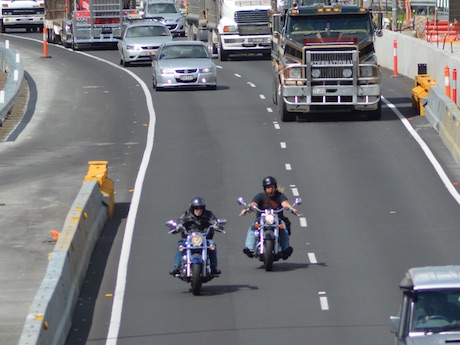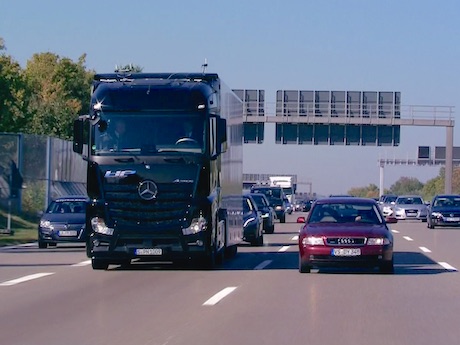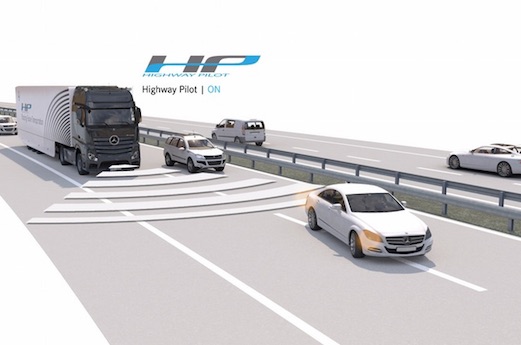The world of driverless and automated vehicles is not far away with three motorcycle companies collaborating, the first test of an automated truck on public roads and one Australian state and four American states now allowing them on public roads.
BMW Motorrad, Honda and Yamaha have announced they are now collaborating to developed “connected motorcycles” which means they will have electronics that talk to each other and other vehicles to make them safer on the roads and will help facilitate automated vehicles, although there is no talk yet of automated motorcycles. Features of this motorcycle consortium will be introduced in bikes from 2020.
Several car companies are also working on this communication technology that will speed up progress toward automated and driverless vehicles on our roads.
The idea of automated vehicles, especially trucks, seems scary to motorcycle riders. Our recent global survey found 29% of riders rate trucks as a high priority threat to them when riding.
But could automated vehicles with sensors that detect other vehicles such as vulnerable motorcycles make riding safer?
The Australian Federal Chamber of Automotive Industries thinks so.
FCAI Chief Executive Tony Weber says driverless cars and connected vehicles have the potential to deliver significant safety and environmental benefits to Australia, and motorists will benefit from reduced congestion in our major cities.
Meanwhile, the South Australian Government is planning a conference to discuss driverless and automated vehicle technology and regulation, and has announced that driverless vehicles will be tested on Adelaide roads.
The American states of Nevada, Florida, California, Michigan, Washington DC and Virginia already allow fully autonomous vehicles to be tested on public roads.
Austroads has also commissioned a pivotal study to assess key issues road operators will face with the introduction of automated vehicles on Australian roads.
Several car manufacturers and tech companies have already developed working prototype autonomous vehicles, including Mercedes-Benz, General Motors, Continental Automotive Systems, IAV, Autoliv Inc, Bosch, Nissan, Renault, Toyota, Audi, Volvo, Peugeot, AKKA Technologies, Vislab from University of Parma, Oxford University and even Google.
Now Daimler Trucks have fitted their Highway Pilot self-driving system to a Mercedes-Benz Actros truck and driven it down a stretch of Autobahn near Stuttgart.
It is the first time an autonomous production semi has been tested on public roads.
Daimler says improvements in driver safety are a compelling reason to pursue the technology in the road freight sector.
By allowing autonomous systems to shoulder some of the burden on long-haul journeys, it says it can reduce driver fatigue and limit mistakes and distractions.
The system uses a short-range radar that assess the vehicle’s surroundings up to 70m in front in a 130-degree arc, with long-range scans to 250m in an 18-degree arc.
These work in conjunction with Active Cruise Control and Active Brake Assist, along with a stereo camera that identifies road markings and guides steering.
Daimler likens the system to the autopilot used in aviation where the pilot/driver is prepared to take control at any time.
The system can prompt the driver to do so if there is a change in weather or road conditions, and if they don’t respond in time the truck is brought to a stop.
To conduct this demonstration, Daimler had to obtain a special permit from Germany’s road traffic regulator, allowing the truck to be driven semi-autonomously on highways at speeds of up to 80km/h.




